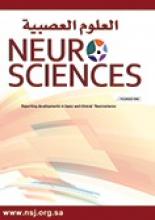Abstract
Unsteady gait is a relatively common presentation to the pediatric emergency and neurology services. Unsteadiness can be due to a wide variety of causes, however, the primary concern on initial assessment is to exclude serious disorders such as meningitis, encephalitis, or brain tumors. Recognizing benign and non-neurological causes of unsteady gait is essential to avoid unnecessary investigations and hospital admission. In this review, a clinical approach to the unsteady child is presented with discussion of diagnostic considerations, approach to investigation, treatment, and prognosis. Ataxia can be cerebellar or sensory. Cerebellar ataxia can be acute, chronic, progressive, or episodic. It may result from trauma, infections, metabolic, degenerative disease, space occupying lesions, or congenital anomalies. Sensory ataxia is due to peripheral neuropathy involving large myelinated fibers that carry vibration and position sense, or due to posterior spinal column dysfunction. Accurate assessment depends on detailed history, examination, and then formulation of a differential diagnosis list to guide laboratory investigations.
- Copyright: © Neurosciences
Neurosciences is an Open Access journal and articles published are distributed under the terms of the Creative Commons Attribution-NonCommercial License (CC BY-NC). Readers may copy, distribute, and display the work for non-commercial purposes with the proper citation of the original work.






